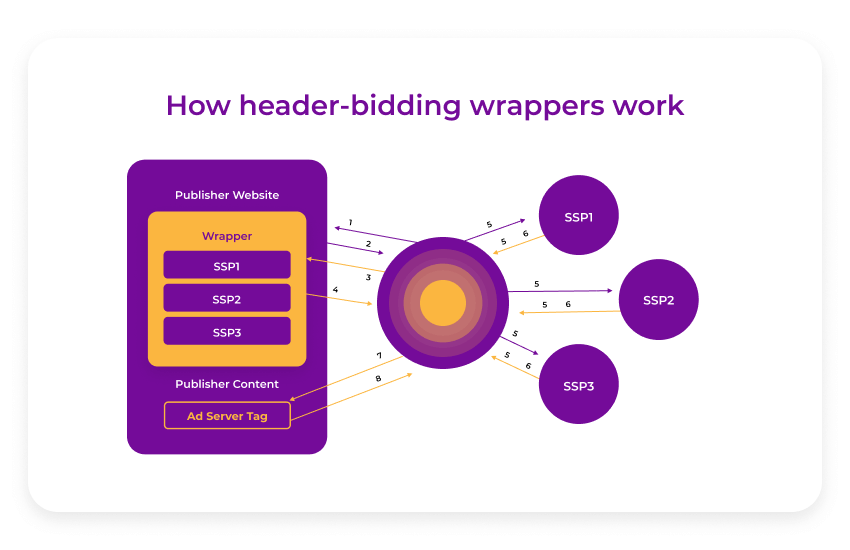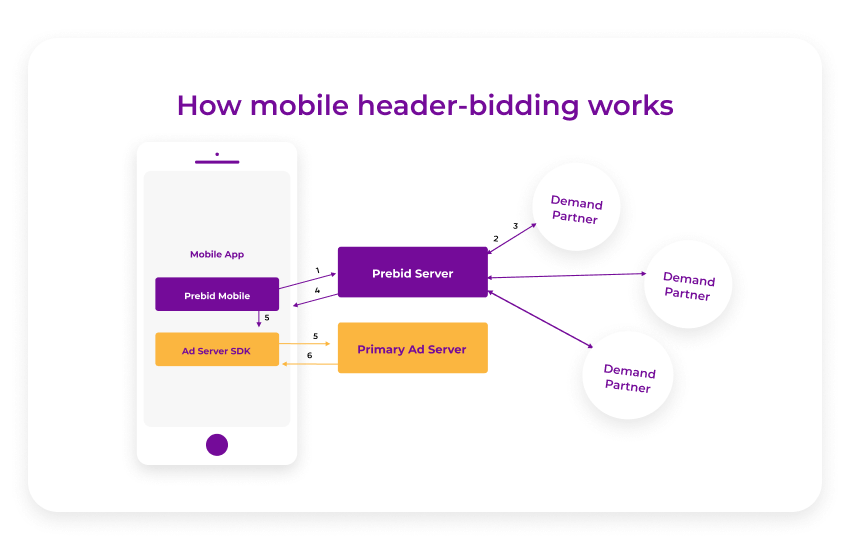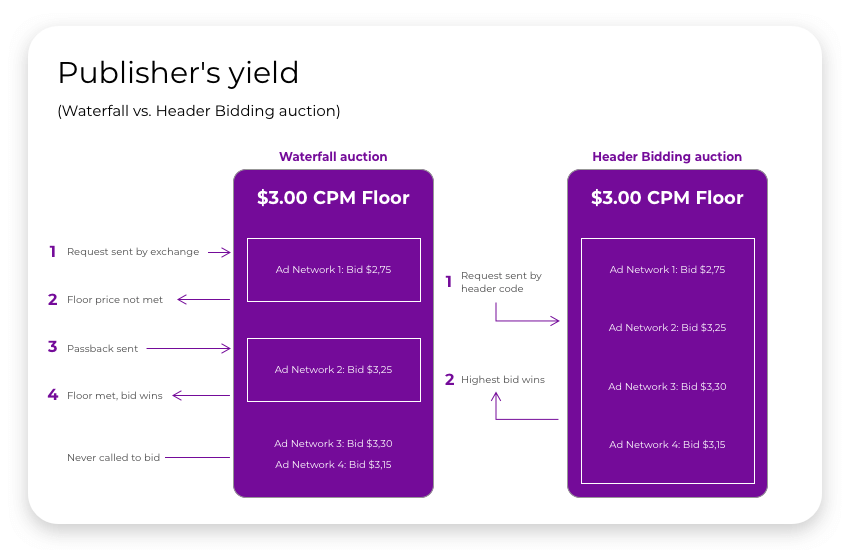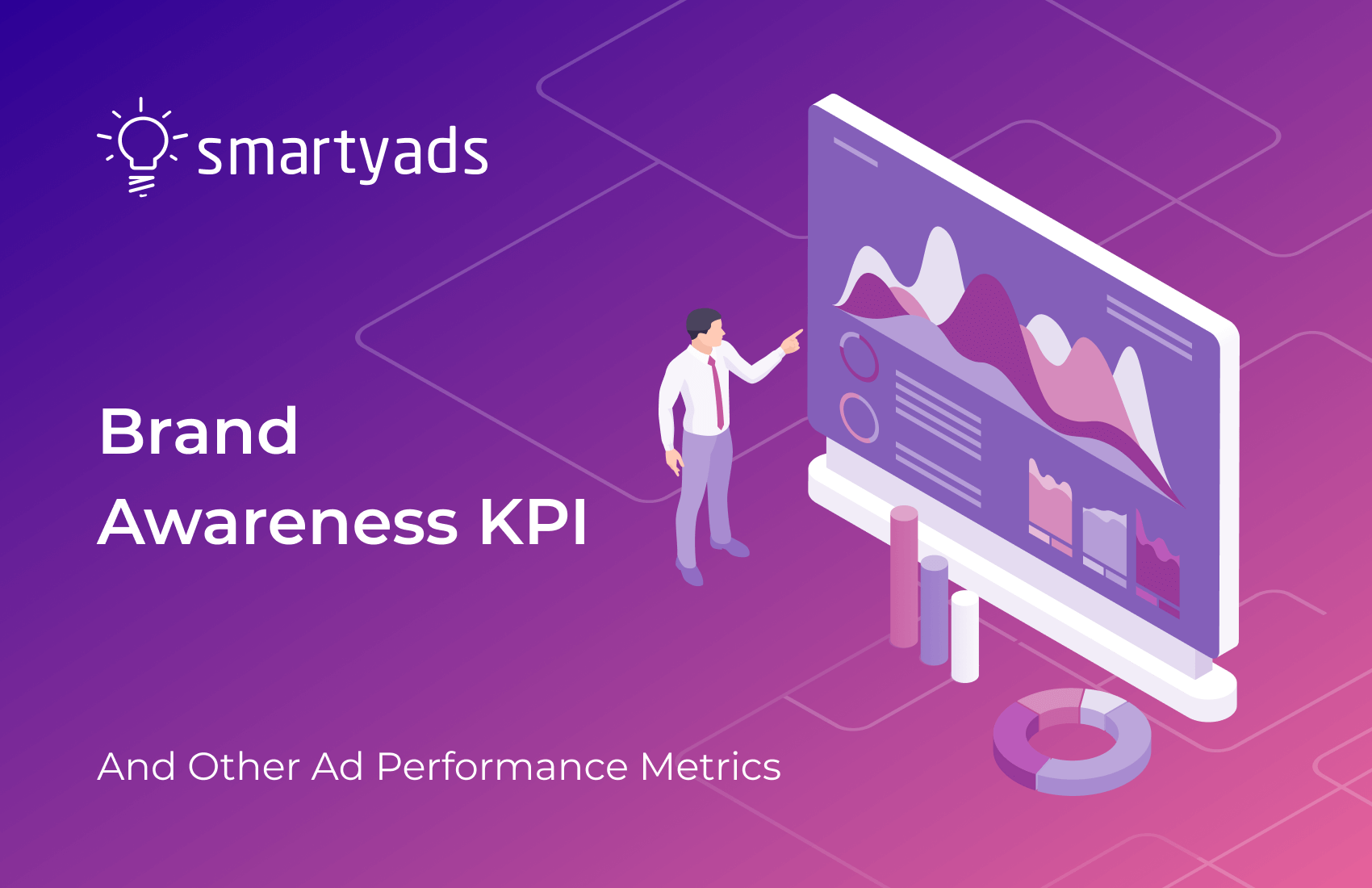When someone visits a website, there's a quick chance to make money from ads. The best way to do this is to let many advertisers see the ad space all at once, not just one at a time. This idea led to the creation of header bidding technology, which has really changed the way ads work online.
The evolution of header bidding, especially its unified auction framework, has been remarkable. Originating on desktop platforms, it swiftly expanded its reach to encompass mobile and in-app environments by the year 2018. By October 2023, it was observed that 3.3 percent of the top one million websites by traffic were leveraging header bidding technology. Looking ahead to 2024, app developers and publishers are venturing into more advanced methodologies, including server-side header bidding and mixed models, aiming to optimize ad serving and elevate the overall user experience.
The horizon holds promising prospects for further development in advertising through connected TV (CTV) and over-the-top (OTT) services, with header bidding poised to broaden its influence. This progression is expected to unlock novel paths for publishers to amplify their revenue streams across diverse platforms.

What is header-bidding?
Header bidding in real-time bidding (RTB) advertising is an advanced technology designed to enable publishers to concurrently receive bids from numerous advertisers, as opposed to the traditional sequential presentation of inventory. Through a unified auction, all advertisers are afforded equal opportunities to bid. This approach not only enhances publishers' revenue but also grants advertisers access to and the ability to purchase high-quality inventory prior to its allocation in the initial phase of the 'waterfall' process.
How does header-bidding work?
Header bidding definition is implemented through the JavaScript library. The header, which is an HTML element on a publisher’s webpage, stores introductory content such as a logo, icon, authorship information, or a set of navigation links. It involves a string of code that is invisible to the end-user.

To put it simply, there's a piece of code that gets added right at the top of a website that a publisher owns. What this code does is pretty cool – it reaches out to a bunch of different ad markets and platforms all at once, asking for bids. Then, the publisher's platform, which is on the supply side, picks the highest offer through a method known as a first-price auction. If you're curious, you might want to look into first-price vs second-price auctions to get a better idea. This whole header bidding thing can be set up in two ways: it can either run directly in your web browser, which is known as client-side, or it can run on a server, known as server-side. Going the server-side route tends to make websites load faster and puts less strain on the tech running them.
This header bidding technique, often referred to as "pre-bidding," is a key component of header bidding explained, as it initiates the auction earlier in the ad-serving process. This approach allows multiple advertisers to compete for ad inventory before the final decision is made by the ad server. Moreover, when the header bidding solution is designed for mobile, it functions as illustrated in the accompanying picture, serving as a practical header bidding example.

Prebid Server receives a request from Prebid Mobile containing account ID, config ID for all request tags.
Prebid Server is responsible for making and sending Open RTB requests to advertisers.
Prebid Server accepts bid responses from each demand partner (that also includes creatives).
Prebid Mobile receives the bid responses from Prebid Server.
Primary Ad server mobile SDK ensures the Prebid Mobile sets the right value for every slot. The value activates the prebid line units tuned by the ad server.
In case the line item is joined with the Prebid Mobile bid wins, the ad server sends Prebid Mobile creative to the SDK.
Prebid Mobile creative JavaScript retrieves and displays matched creative to the user.
Header-bidding vs RTB waterfall: who wins and why
Because programmatic initially was built on the waterfall (sequential bidding), it often caused problems with inventory underestimation and decreased the publisher’s revenue as a result.
In a waterfall auction, when the impression became available, it was offered to the first-tier buyers. If nobody from the first row swallowed the bait, the impression was suggested to the next tier and so on until someone bid on it. This contrasts with the simultaneous auction model of header bidding vs waterfall, where multiple demand sources can bid on the impression concurrently, potentially leading to higher revenue for the publisher.
The process of ad prioritization was managed through the publisher’s ad server, which gave preference to advertisers who reserved impressions. Demand partners could compete only for unreserved impressions on a cost-per-thousand (CPM) and fill-rate basis.
Publishers did not receive the real value of their inventory and had to jump from one ad network to another trying to sell the remnant inventory via direct deals or on private auctions.

How header-bidding works for publishers?
Increased competition: Offering impression to the larger number of buyers results in fair competition and higher CPMs. Incorporating the header bidding for video or any other ad, publishers see 15 to 100 percent increase in revenues depending on the complexity of their programmatic stack and the number of bidders.
No ad server adjustments: With waterfall auctions, demand fluctuations require constant adjustments. With header bidding, once the code is inserted into the bidder, publishers do not need to modify it unless they add a new partner to the list.
No demand management: Publishers do not need to manage the order in which demand partners are prioritized because each of them claims the value of the impression in advance.
Reduced latency: Multilayer waterfall programmatic model is inherently latent, and rendering is quite time-consuming. Header bidding programmatic decreases the time for rendering the ad, improving the user experience.
Maximized yield: In a waterfall sales, the value of the impression reduces over time, which is why so much inventory remains unsold. With header bidding, the value of every inventory is maximized.

Benefits of Header Bidding for Publishers
Header bidding has changed the way publishers operate, bringing significant benefits that improve both revenue and operational efficiency. Here are some of the main advantages for publishers:
- Higher ad revenue: By allowing multiple advertisers to bid simultaneously, publishers can increase competition and maximize their CPM (cost per thousand impressions), driving up overall revenue.
- Improved fill rates: Header bidding ensures that publishers can sell more of their available inventory by opening it up to a wider range of demand sources, reducing unsold impressions.
- Access to premium demand: Publishers can directly access high-quality advertisers, including those that typically reserve their budgets for private marketplaces, which leads to higher bids for premium ad placements.
- Greater control and transparency: Publishers maintain more control over their inventory and get clearer insights into who is bidding and at what price, which helps them make smarter decisions about which ads to run.
- Reduced reliance on waterfall: Header bidding eliminates the inefficiencies of the traditional waterfall model, where ad calls are made in sequence. Instead, publishers can offer all their inventory to all bidders at once, improving overall efficiency.
By adopting header bidding, publishers can tap into fresh avenues for expansion while retaining authority and clarity within their advertising framework.
Benefits of Header Bidding for Advertisers
Header bidding offers several key advantages that have reshaped the digital advertising:
- Better viewability on available inventory: In traditional waterfall auctions, advertisers have limited access to available inventory due to some being sold in private marketplaces or direct deals. With header bidding, buyers gain a 360-degree view of all available inventory, increasing their chances to bid on and win premium placements.
- Worldwide reach: Header bidding allows advertisers to access inventory at a global scale, giving them the ability to reach niche audiences across diverse markets. This wider reach results in more precise targeting of potential customers.
- Increased transparency: Header bidding fosters a more transparent ecosystem by enabling advertisers to trade directly with publishers, reducing the reliance on intermediaries. This ensures clearer pricing and greater trust.
- Market insights: Advertisers benefit from detailed data on inventory availability and pricing, which allows for a deeper understanding of the real value of their targeted audience. This transparency helps optimize bidding strategies and enhances campaign performance.
For more insights on how to monetize website and blog traffic, check out this article.
How to Setup Header Bidding
Step 1: Search for Relevant Demand Partners
The first step in setting up header bidding is to identify and partner with demand sources that are a good fit for your website or app. Look for demand partners that align with your audience demographics and offer competitive rates. These partners could include SSPs (Supply-Side Platforms), DSPs (Demand-Side Platforms), and ad exchanges. Consider integrating partners that offer high-quality, relevant ads and align with your overall monetization strategy.
Step 2: Install and Assemble a Header Bidding Wrapper
A header bidding wrapper is a piece of JavaScript code that manages all your demand partners in one place. This wrapper orchestrates the bidding process, sending out ad requests to your demand partners simultaneously. To implement it, you’ll need to install the wrapper on your site’s header, usually just before the closing </head> tag. Popular wrappers like Prebid.js offer flexible integration and allow for easy addition or removal of demand partners as needed.
Step 3: Configure Bidder Ad Units and Parameters
Once the wrapper is installed, you’ll need to configure your bidder ad units. These are the individual slots on your website where the ads will be displayed (e.g., header, sidebar, in-article). You’ll assign the relevant demand partners to each ad unit and set the targeting parameters, such as size, type of ads, and any custom settings like geographic targeting or audience segmentation.
Step 4: Test and Debug
Before going live, it’s essential to thoroughly test the header bidding setup to ensure everything functions smoothly. Use tools like Prebid’s Debugging Console or Chrome’s Developer Tools to monitor the bidding process, check for errors, and make sure bids are being submitted and winning in real-time. This phase helps you iron out any technical issues and fine-tune your configurations.
Step 5: Monitor Performance and Optimize
After implementing header bidding, it's crucial to continuously monitor its performance. Track metrics such as bid density, CPMs, fill rates, and latency. Use this data to optimize your setup by adding or removing demand partners, adjusting ad unit sizes, or tweaking bid strategies. Regular monitoring helps ensure that your revenue is maximized while maintaining a smooth user experience.
By following these steps, you can successfully implement header bidding, increase competition for your ad inventory, and boost your overall revenue.
The Future of In-App Header Bidding
First-Price Auctions Are the New Standard
As the digital advertising world shifts toward first-price auctions, header bidding is following suit. In a first-price auction, advertisers pay the exact amount they win the impression for, creating a more straightforward and transparent pricing model. This contrasts with the second-price auction model, where the winning bidder pays the second-highest bid plus a small increment, often allowing room for manipulations and discrepancies in pricing.
Bid Shading: A Temporary Solution
For many DSPs transitioning from second-price auctions to first-price, the adjustment can be technically complex and challenging. Advertisers may also struggle to recalibrate their bidding strategies. To address this, bid shading has emerged as a temporary measure. Bid shading "shades" or reduces the bid amount slightly to bring it closer to the second-highest bid, protecting advertisers from overpaying while maintaining some level of competition.
Mobile and Native Formats are the Future
Header bidding in advertising is no longer just for traditional display ads. While standard banner advertising remains a common and affordable format, the future lies in mobile, native, and interactive video ads. Publishers who adapt to these newer formats can expect higher yields and increased user engagement. As mobile traffic continues to dominate, native ads will provide more seamless, user-friendly experiences, leading to improved revenue potential and long-term success in the header bidding ecosystem.
Conclusions
Header bidding is the secret sauce that continues to change the game. From boosting publisher revenue to providing advertisers with unprecedented transparency, it’s no wonder this technology is gaining momentum. As more publishers and app developers jump on board, we're seeing a shift from old-school waterfall auctions to the sleek, high-performance engine of first-price auctions, with mobile and native formats leading the charge.
So, if you're still on the sidelines, it's time to take the plunge—your ad inventory is ready for its close-up. Ready to level up your header bidding game? Explore SmartyAds DSP for seamless integration and smarter monetization strategies.

![What Is Header Bidding: [Complete Guide]](/storage/uploads/header-bidding.png)



